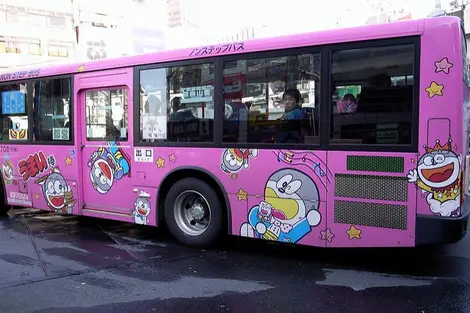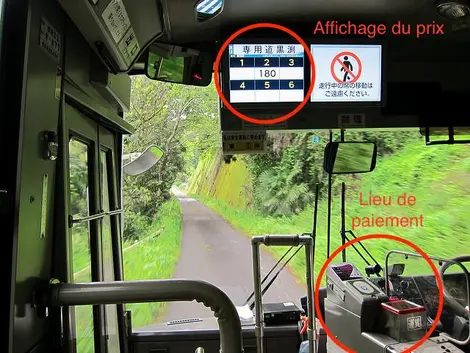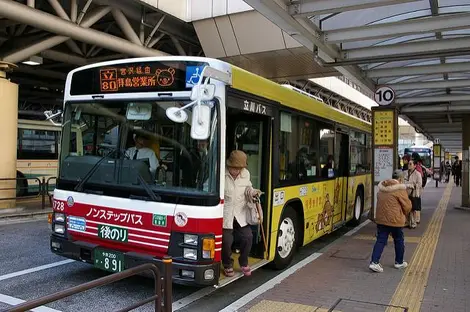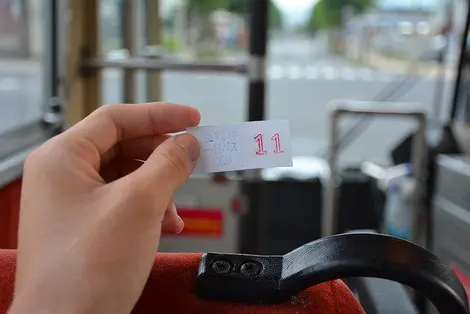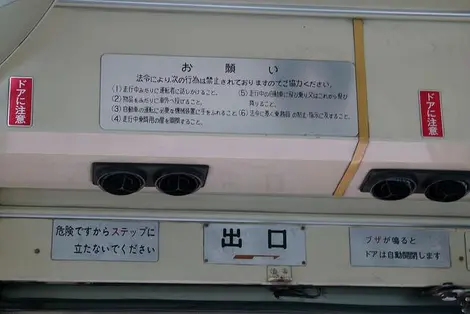Taking the City Bus 路線バス
Multipass
Across Japan, in addition to trains and subways, buses weave through the city, bound for multiple destinations.
In Japan there are often several bus companies that offer their services, and some must be used in different ways to others, which can complicate things.
Getting on and off
There are many ways in Japan to board a bus, and these can differ according to the city or region where it runs:
- Board through the side door (or front door) - always get off through the front door - pay when you get off
This process is common throughout Japan and especially in Osaka, Kobe, Shizuoka, Nara, in the prefectures of Kanagawa and Chiba, as well as throughout Kyushu and Tohoku. You have to board at the side (or front) door, and take the ticket that the machine dispenses. This ticket will have a number printed on it that corresponds to the current stop.
If you have an IC card ( such as a Suica or Pasmo), you must touch it to the reader - a beep will sound, and that's it, you can ride.
To get off, push the button next to each row of seats (if someone hasn't already). A bell will ring and it will light up, and the driver will stop at the next stop.
For the fare, check the numbered board located above the driver - the price depends on the number on your ticket. If, for example, 6 is the number on your ticket, and the amount by number 6 is 580円, that's the fare you pay. Put the amount in cash, along with your ticket, in the machine next to the driver.
It is usually possible to make change with this machine, if necessary. Insert a 1000円 note and the equivalent in coins will come out so that you can pay the exact fare.
- Board through the front door - get off at the side door - pay when you get on
This type of bus has a single rate for the whole line. You can find it all over Japan and especially in Tokyo, Yokohama, Nagoya, Nara, and the prefectures of Kanagawa and Chiba.
You pay by putting the coins in the machine or by touching your card IC to the reader.
The price is written at the bus stop, and/or on the bus itself.
Press the button to request the stop, disembark from the side door (often located in the middle of the bus).
To simplify life
Major tourist cities like Osaka or Hiroshima offer a ticket valid for the entire day throughout the bus network.
They are often good value for money (except for Tokyo where day tickets are often only valid on metro lines) and easier to use if you plan to make several long trips.
They come in the form of a flexible card to be introduced into the machine next to the driver who will often help you, or else as a small card to show at the entrance or as you get off the bus.
You can buy this type of ticket from the driver or the tourist office.
Good to know
Always get the fare ready before getting off the bus, the Japanese very rarely wait for other passengers, and you don't want to be the reason the bus gets held up.
Payment by IC card (Suica/Pasmo) is faster.
The machines on the buses only accept coins and 1000円 notes.
The night rate applies from 23:00.
The adult rate applies from 12 years old and up.
The child (half price) fare is for children between 6 -11 years.
Children under 6 years old accompanied by an adult can ride for free.
To take the bus with a stroller, it's often best to fold it away, especially when the bus is busy. Otherwise, there is a special area with a belt to secure it in place.
There is no smoking on the bus.
A bus stop is called a basutei (バス停) or basu noriba (バス乗り場).
Put your cell phone on vibrate mode and avoid loud conversations on the bus.






